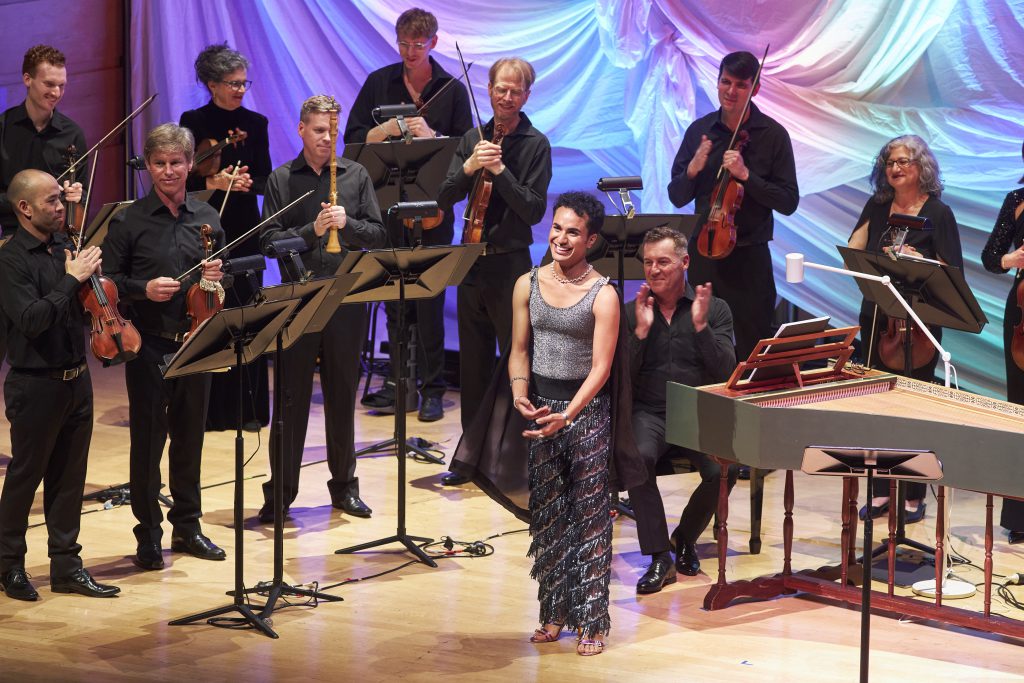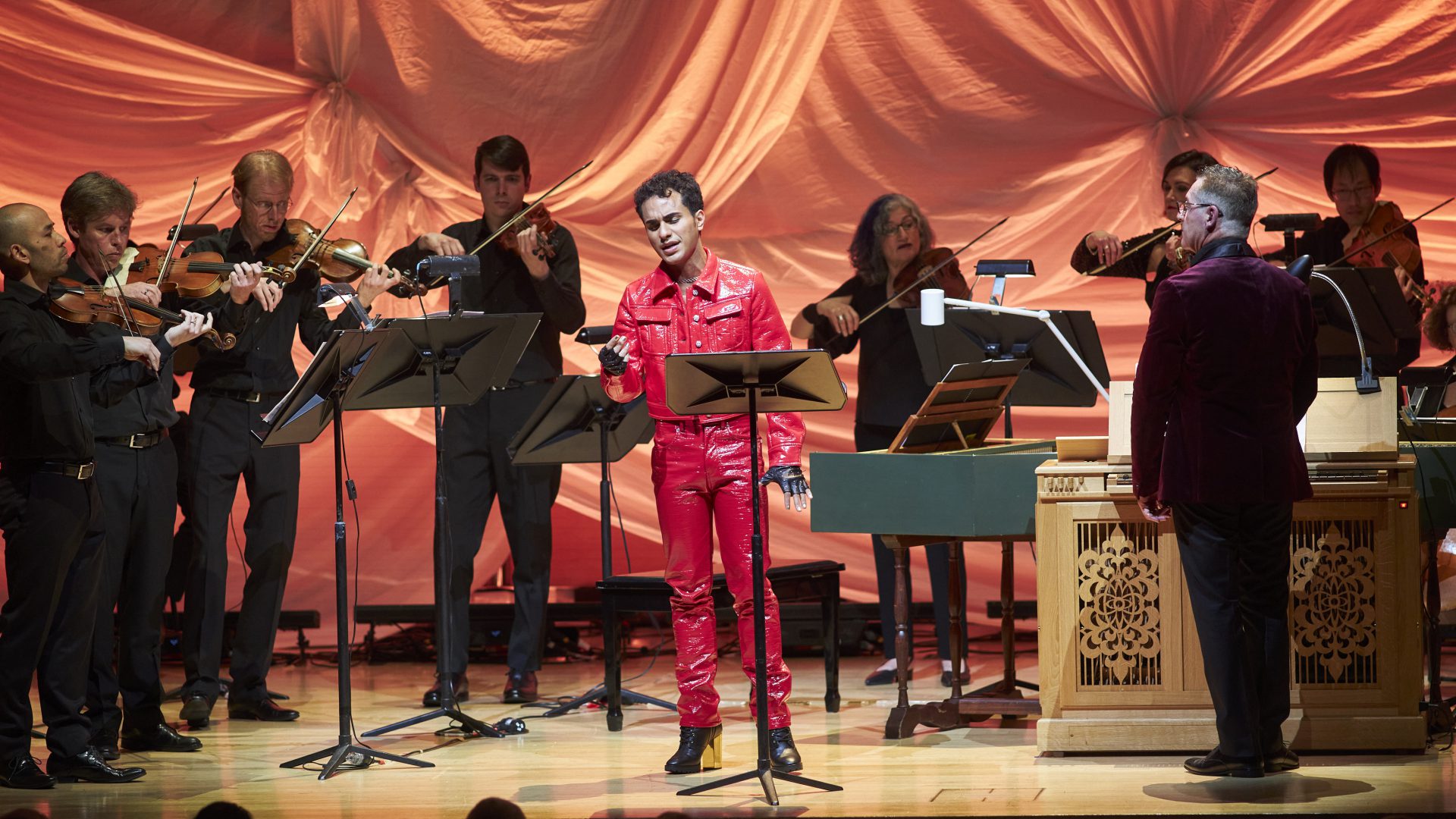Since his debut with the Australian Brandenburg Orchestra only two years ago, Samuel Mariño has become an Australian favourite.
He is one of very few male singers with a naturally high pitch capable of singing as a soprano. That, combined with an infectious stage presence, has rightly cemented his position as a highly sought-after soloist.
The theme of this concert was the heroine. So it was only fitting that the concert started with the Overture from Handel’s Alcina. It took a short while for the orchestra to gain momentum, especially in the synchronised trills. The B-section was performed at a sprightly pace and not as a tombeau as some recordings would have it.
Then came Mariño, resplendent in purple, singing Handel’s ‘Ritorna, oh caro e dolce mio tesoro’ from Rodelinda. It was delightfully soft.
But Mariño’s powers were best shown in ‘Ma quando tornerai’, from Alcina. He despatched the descending melismas with ease and a confident abandon.
Instrumental intermezzi followed in the form of Marcello’s Sinfonia from Joaz. Paul Dyer tells us it is an Australian premiere, revived as it was from an original manuscript. As we know, Marcello knows how to write an Adagio. In the Adagio, Shaun Lee-Chen was at his best. Dyer had an interesting take on the Presto, which was reduced largely to glissandi to give a whimsical effect, as though it ends in media res.
Mariño was at his best in the next aria, Handel’s ‘Ombre piante’ from Rodelinda. It is a classic Baroque lament. The instrumental opening is a wistful echo between flute and strings on a lilting motif that gradually climbs upward. Mariño’s voice was often so soft and precise, even in the highest registers, that it was often indistinguishable from the winds.

The next aria, Handel’s ‘Destero dall’empia dita’, may as well have been called, in an adaptation of Monteverdi and Vivaldi, Il combattimento con molti strumenti. Mariño was pitted against Alexandera Bieri on baroque trumpet, and Adam Masters on baroque oboe. Mariño showed off his vocal range and his mastery of dynamics by challenging each combatant to match his impossibly virtuosic melodies. No one emerged unscathed.
Another revived concerto grosso came after the interval – Hasse’s Sinfonia a quattro in G minor. The tremolos in the Allegro were executed to great effect.
The highlight of the second half was Mariño’s performance of Handel’s ‘Che sento? oh dio! – Se pieta’ from Giulio Cesare. Like most Baroque laments, it was grounded on a descending fourth. The audience was left in awe of how delicately Mariño negotiated the meandering passages in the highest part of his vocal range. It was a masterclass in control and dynamic range.
The encore, as one would expect from a concert centred largely on stellar Handel arias, was ‘Lascia ch’io pianga’. Mariño seemed to savour each phrase.
The Australian Brandenburg Orchestra has commenced its 2025 season with what it does best – treating Australian audiences to world-class soloists in a way that brings the Australian early music scene in dialogue with that in Europe, the Americas and elsewhere.
